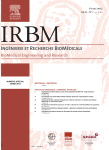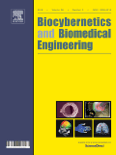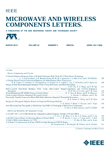
Frontiers in Medical Technology
Scope & Guideline
Advancing the Future of Healthcare Innovation
Introduction
Aims and Scopes
- Medical Device Innovation and Development:
The journal focuses on the design, development, and evaluation of medical devices, emphasizing innovative approaches such as 3D printing, nanotechnology, and smart devices for improved patient care. - Artificial Intelligence and Machine Learning in Healthcare:
A core area of research includes the application of AI and machine learning technologies for diagnostics, treatment planning, and patient monitoring, reflecting the growing importance of data-driven approaches in medicine. - Regulatory and Ethical Considerations:
The journal addresses the regulatory landscape surrounding medical technologies, including best practices and ethical implications, ensuring that advancements align with safety and efficacy standards. - Translational Research and Clinical Applications:
Research published in the journal often bridges laboratory findings with clinical applications, focusing on how technological innovations can be effectively translated into healthcare settings. - Interdisciplinary Approaches in Medical Technology:
The journal promotes interdisciplinary research that combines insights from engineering, biology, and clinical practices to foster the development of comprehensive medical solutions.
Trending and Emerging
- Telemedicine and Remote Monitoring:
The rise of telemedicine and remote patient monitoring technologies has become a focal point, especially in light of the COVID-19 pandemic, emphasizing the need for accessible healthcare solutions. - Nanotechnology in Medicine:
Research exploring the use of nanoparticles for drug delivery, imaging, and treatment of diseases is gaining traction, showcasing the potential for nanotechnology to revolutionize medical applications. - Artificial Intelligence for Predictive Analytics:
AI's role in predictive analytics for patient outcomes and treatment efficacy is increasingly highlighted, underscoring its potential to transform personalized medicine. - Immersive Technologies in Medical Training:
Emerging themes around the use of virtual reality (VR) and augmented reality (AR) in medical training and simulations are becoming more prevalent, enhancing the educational landscape for healthcare professionals. - Sustainable and Low-Cost Medical Solutions:
There is a growing trend towards developing sustainable and cost-effective medical solutions, particularly for low- and middle-income countries, reflecting a commitment to global health equity.
Declining or Waning
- Traditional Diagnostic Methods:
There is a noticeable decrease in research focused on conventional diagnostic methods, such as basic imaging techniques or standard laboratory tests, as newer technologies and AI-driven diagnostics gain prominence. - Basic Biomedical Research:
The journal has seen a waning interest in purely basic biomedical research, with increasing emphasis on translational studies that directly impact clinical practices and patient outcomes. - Static Medical Devices:
Research centered on static or non-interactive medical devices is becoming less common, as there is a greater shift towards dynamic, adaptable technologies that integrate with real-time data and patient interactions. - Single-Discipline Studies:
The journal is moving away from studies that focus solely on one discipline, favoring interdisciplinary research that combines insights from multiple fields to address complex medical problems.
Similar Journals

BME Frontiers
Bridging Research and Real-World Healthcare SolutionsBME Frontiers, published by the American Association for the Advancement of Science, is an innovative open-access journal dedicated to the burgeoning field of Biomedical Engineering. Since its establishment in 2020, this journal has aimed to bridge the gap between cutting-edge research and practical application, promoting advancements in biomedical technologies, medical devices, and healthcare solutions. Boasting impressive rankings within Scopus—64th among 398 in Medicine (miscellaneous) and 81st among 303 in Biomedical Engineering—BME Frontiers stands out as a significant contributor to scholarly communication, offering rich insights for researchers, professionals, and students alike. With consistent publication projected through 2024, the journal serves as an essential platform for disseminating high-quality research that can drive innovation and inspire new approaches in the healthcare sector.

IRBM
Elevating the Dialogue in Biomedical Engineering and BiophysicsIRBM, published by Elsevier Science Inc, stands at the forefront of research in the domains of Biomedical Engineering and Biophysics, boasting impressively high rankings with a Q1 category in both fields according to the 2023 evaluations. With an effective focus on cutting-edge innovations and methodologies, IRBM provides a vital platform for researchers, professionals, and students alike seeking to disseminate and access groundbreaking findings and developments. Its strong presence in the Scopus database, with ranks of #12 in Biochemistry, Genetics and Molecular Biology and #42 in Biomedical Engineering, places it in the top percentile of impactful journals in the field, making it a crucial resource for advancing knowledge and fostering collaboration. While the journal maintains a traditional subscription model, it continues to attract a diverse readership eager for insightful studies and reviews that push the boundaries of science and engineering. With a projected convergence of years extending to 2024, IRBM promises to remain a significant contributor to the ongoing dialogue in the life sciences.

Journal of Medical Signals & Sensors
Transforming Medical Research with Cutting-Edge InsightsJournal of Medical Signals & Sensors, published by Wolters Kluwer Medknow Publications, is a pioneering platform in the fields of Biomedical Engineering, Computer Science, and Health Informatics, focusing on innovative research and advancements in medical technology. With an Open Access policy since 2012, the journal promotes widespread dissemination of knowledge, aiming to facilitate the sharing of vital insights and developments among researchers, healthcare professionals, and students globally. The journal has achieved commendable rankings in its various categories, including Q3 in Biomedical Engineering and Radiology, underscoring its importance in advancing health technology and informatics. Its commitment to rigorous peer review ensures that published works are of the highest quality, making it a valuable resource for those engaged in cutting-edge medical research. With annual publications planned through 2024, the Journal of Medical Signals & Sensors continues to expand its influence and relevance in a rapidly evolving scientific landscape.

Biocybernetics and Biomedical Engineering
Unleashing the Potential of AI in HealthcareBiocybernetics and Biomedical Engineering, published by ELSEVIER in the Netherlands, is a prestigious journal that stands at the forefront of the intersecting fields of biomedical engineering and artificial intelligence. With an impressive Impact Factor that places it in the Q1 category for Biomedical Engineering, this journal not only ranks 17th out of 303 in Scopus but also boasts a remarkable percentile ranking of 94th, highlighting its influence and relevance within the scientific community. Since its inception in 2008, Biocybernetics and Biomedical Engineering has aimed to publish cutting-edge research that integrates principles of cybernetics with technological advancements in health care, thereby fostering innovations that improve patient outcomes. Dedicated to advancing knowledge in biomedical technology, the journal serves as a vital resource for researchers, professionals, and students seeking to explore the latest developments and methodologies in the field.

Bioengineering-Basel
Catalyzing Collaboration in BioengineeringBioengineering-Basel, an esteemed journal published by MDPI, stands at the forefront of innovation in the field of bioengineering since its inception in 2014. With an E-ISSN of 2306-5354, this fully Open Access journal based in Switzerland provides a platform for researchers and professionals to disseminate cutting-edge findings across various aspects of bioengineering, including biomaterials, tissue engineering, and biopharmaceuticals. The journal has been recognized with a Q3 ranking in the 2023 Bioengineering category, reflecting its commitment to quality and relevance. By facilitating widespread accessibility to academic knowledge, Bioengineering-Basel aims to foster collaboration and stimulate thought leadership within the global research community, making it an indispensable resource for students, scholars, and industry practitioners alike.

IEEE MICROWAVE AND WIRELESS COMPONENTS LETTERS
Unleashing Cutting-Edge Discoveries in Wireless Components.IEEE Microwave and Wireless Components Letters, published by the esteemed IEEE - Institute of Electrical and Electronics Engineers, stands as a crucial platform for disseminating innovative research in the realms of microwave and wireless technology. With an impact factor that emphasizes its significance in the academic community, the journal has achieved notable rankings, including Q1 in Condensed Matter Physics and Q2 in Electrical and Electronic Engineering for 2023. Covering an extensive range of topics pertinent to practitioners and theorists alike, it aims to provide rapid publication of short, concise letters reporting on cutting-edge research findings that drive the field forward. Although coverage in Scopus has been discontinued, the journal remains an influential resource, reflecting its long-standing dedication to advancing electrical engineering and applied physics, thus making it an essential read for anyone invested in these dynamic disciplines.

Expert Review of Medical Devices
Unveiling the Future of Medical TechnologyExpert Review of Medical Devices is a distinguished academic journal published by Taylor & Francis Ltd, focusing on the critical interplay between innovative medical technology and clinical application. Since its inception in 2004, this journal has emerged as a respected resource in the fields of Biomedical Engineering, Medicine, and Surgery, currently holding an esteemed position within the Q2 quartile across these domains. The journal is indexed under ISSN 1743-4440 and E-ISSN 1745-2422, reflecting its dedication to disseminating high-quality research to a global audience. With impressive Scopus rankings—placing it within the 90th percentile for Medicine and Surgery—the journal aims to advance the understanding of cutting-edge medical devices and facilitate discussions that bridge engineering innovation with clinical excellence. As a vital source of knowledge, it serves researchers, professionals, and students seeking to explore the latest developments and future directions of medical technology. Be part of a vibrant scholarly community contributing to the forefront of healthcare innovation through the pages of Expert Review of Medical Devices.

IEEE Open Journal of Engineering in Medicine and Biology
Unlocking the potential of interdisciplinary research.IEEE Open Journal of Engineering in Medicine and Biology is a premier Open Access journal published by the esteemed IEEE-INST ELECTRICAL ELECTRONICS ENGINEERS INC, dedicated to advancing the interdisciplinary fields of biomedical engineering and medicine. Since its inception in 2020, the journal has quickly established itself within the academic community, boasting a notable ranking of #49 out of 303 in the Biomedical Engineering category on Scopus and achieving an impressive 83rd percentile. With an objective of disseminating high-quality research and innovative developments that bridge engineering and medical sciences, the journal is committed to fostering collaboration among researchers, healthcare professionals, and policymakers. Operating with Open Access since 2020 allows for wider accessibility and dissemination of cutting-edge findings, promoting the exchange of knowledge vital for tackling contemporary challenges in health technology. As the journal continues to grow through to 2024, it remains a vital resource for anyone invested in the enhancement of medical technology and the betterment of patient care.

SLAS Technology
Advancing Innovation at the Intersection of Medicine and ComputingSLAS Technology, published by Elsevier Science Inc., stands at the forefront of innovation in the fields of medical laboratory technology and computer science applications. With an ISSN of 2472-6303, this esteemed journal has gained recognition for its contribution to advancing research and technology in the systematic study from 2016 to 2024. The journal currently holds a commendable Q2 ranking in medical laboratory technology and a Q3 classification in computer science applications, illustrating its significant impact and relevance, particularly in the health professions where it ranks #4 of 41 in its field with a notable 91st percentile score. Offering an open access model, SLAS Technology ensures wide dissemination of groundbreaking advancements and methodologies, making it a vital resource for researchers, professionals, and students alike. With its interdisciplinary approach to key technological issues, SLAS Technology positions itself as an essential platform for those dedicated to pioneering solutions in laboratory science and computational technologies.

Annual Review of Biomedical Engineering
Catalyzing Interdisciplinary Insights in Biomedical EngineeringAnnual Review of Biomedical Engineering, published by Annual Reviews, stands as a leading academic journal dedicated to the rapidly evolving field of biomedical engineering. With an impressive impact factor that reflects its high citation rates and rigorous peer-review process, this journal offers critical insights by synthesizing cutting-edge advancements and applications in both biomedical engineering and miscellaneous medicine. The journal, which is available in both print (ISSN: 1523-9829) and electronic formats (E-ISSN: 1545-4274), serves as an essential resource for researchers, professionals, and students aiming to stay abreast of significant developments and emerging trends. As of 2023, it is recognized in the top tier (Q1) for both Biomedical Engineering and Medicine, showcasing its esteemed position within the academic community, reflected in its high Scopus rankings. Spanning from 1999 to 2024, the Annual Review of Biomedical Engineering continues to catalyze interdisciplinary collaboration and innovation at the intersection of engineering and healthcare.